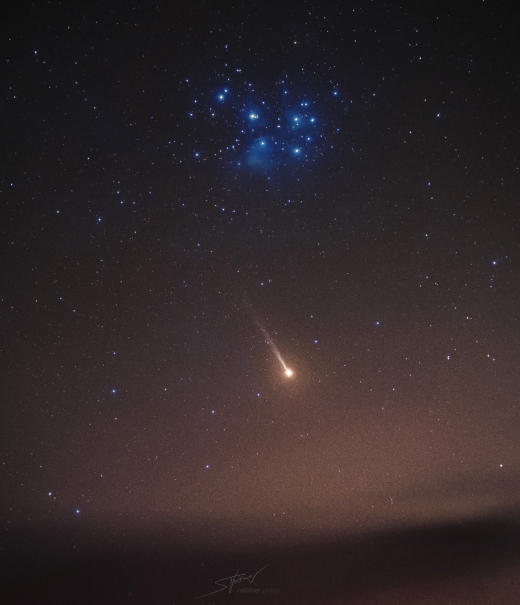April 29, 2022: Planets aren’t supposed to have tails, but Mercury does. Dr. Sebastian Voltmer just photographed it from La Palma in the Canary Islands:

“This is NOT a comet, not even a meteor, but the planet Mercury, which is currently very close to the Pleiades,” says Voltmer. “How is the tail formed? The solar wind and micro-meteorites eject sodium atoms from Mercury’s surface. This creates a yellow-orange tail of sodium gas that is around 24 million kilometers long.”
People around the world have been watching Mercury climb up the evening sky this month. Some of them are probably wondering “why didn’t I see the tail?”
Answer: A special filter is required. “I used a 589 nanometer filter tuned to the yellow glow of sodium,” says Voltmer. Without this kind of sodium filter, Mercury’s tail would be invisible.

Voltmer says the tail is so bright, he could see it in individual 30 second exposures. “I can see some very small changes in shape of the tail,” he says, “and the brightness is slightly increasing.”
The nights ahead are excellent times to catch this phenomenon. On April 29th and 30th, Mercury will glide past the Pleiades star cluster for a fantastic photo-op. Then, on May 1st and 2nd, the crescent Moon joins the show.
“Currently I’m imaging Mercury day by day just after sunset from the Canary Islands,” says Voltmer. Stay tuned for more sodium.